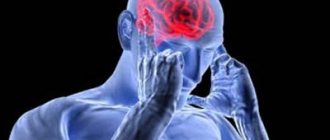Signs of a high fever
The following signs (symptoms) may indicate that the temperature is rising:
- a feeling of weakness, sudden fatigue, a general painful state;
- chills (mild chills at slightly elevated temperatures and severe chills at high temperatures);
- dry skin and lips;
- headache, body aches;
- loss of appetite;
- sweating (“breaks into a sweat”);
- arrhythmia.
If you are experiencing any of these symptoms, it would be a good idea to take a thermometer.
How to help the body with fever?
- Do not increase the temperature artificially.
Do not take a hot bath, do not steam your feet, do not apply mustard plasters and alcohol compresses, do not drink alcohol, hot milk, tea, coffee, do not wrap yourself in blankets.
- Drink plenty of fluids.
The drink should be plentiful and warm, maybe at room temperature, and always unsweetened. The best is mineral water with lemon, lingonberry or cranberry juice. The blood becomes more fluid, toxic substances are eliminated faster, and the body does not suffer from dehydration. Sugary drinks are dangerous because water will come out along with sweat, and glucose will become an additional source of food for pathogens.
- Sweat properly and stay in bed
Intense sweating is a natural mechanism of thermoregulation during fever. As sweat evaporates from the skin, it cools the body and prevents it from overheating. By wrapping the patient in several blankets and insulated pajamas, we prevent sweat from evaporating. A person with a fever should wear cotton clothing and lie under a light, thin blanket. When clothes get wet, they need to be changed.
- Cleanliness and fresh air.
The room should be clean and well ventilated. As a rule, a sick person breathes through his mouth, which means that an infection will quickly enter his lungs along with moist, stale air. The air temperature in the room should be approximately 22°C - 24°C. It is extremely important that there are no drafts.
- Do not wipe your body with vodka or alcohol.
Alcohol vapor evaporates very quickly and causes sudden hypothermia and severe chills. It is best to wipe the body with a sponge soaked in warm water, or put the patient in a cool bath for a while.
- Food should be light
During illness, everything fried, salty, fatty, spicy, and alcohol should be excluded from the diet. The best choice is low-fat broths, juices, fruit drinks, fresh and boiled fruits and vegetables.
What is considered a high temperature?
Normal temperature is generally considered to be 36.6°C. But in fact, temperatures within a fairly wide range are normal.
During the day, body temperature fluctuates quite a bit. The lowest temperature is observed in the morning, immediately after waking up; maximum - in the evening, at the end of the day. The difference can be somewhere around 0.5°C. Physical activity, stress, ordinary meals, drinking alcohol, staying in a bathhouse or on the beach can raise the temperature. In women, temperature fluctuations are also associated with ovulation. A few days before ovulation, the temperature decreases, and when ovulation occurs, it increases.
On average, a normal temperature is considered to be between 35° and 37°C. In children under 3 years of age, a temperature of up to 37.5°C is also considered normal. Where you take your temperature matters. You can focus on 36.6°C if you place a thermometer under your arm. If the thermometer is held in the mouth ( oral temperature
), then the normal temperature will be 0.5°C higher (36.8-37.3°C).
In order to obtain normal values when measuring the temperature in the rectum ( rectal temperature
), you will need to add another half a degree (the norm is 37.3-37.7 ° C). Based on the measurement of the temperature under the arm, an elevated temperature is a temperature in the range of 37-38°C, a high temperature is above 38°C.
Worrying is either a temperature that rises above 38°C or a temperature of up to 38°C that persists for a long time ( low-grade fever
).
When should you seek emergency medical help?
It is necessary to call a doctor or ambulance in the following cases:
- The child is less than 3 months old and has a temperature of 38°C or higher
- The baby is between 3 and 6 months old and has a temperature of 39°C or higher
- Against the background of fever, rash, vomiting, and diarrhea appeared
- Fever lasts for 5 days or more
- The child refuses the breast, does not eat, behaves unnaturally
- The child has signs of dehydration: dry diapers, sunken eyes, crying without tears.
Still have questions?
Get an online consultation from leading pediatricians in St. Petersburg!
A professional and experienced pediatrician will answer your questions.
Medical care for a child without leaving home at a convenient time.
sign up for a consultation
A Skype consultation lasts 45 minutes.
When is an increase in temperature dangerous?
High body temperature is an undoubted sign that some pathological process, usually of an inflammatory nature, is developing in the body. The higher the temperature, the faster it rises or the longer it lasts, the more serious the problem that caused it may be. This is why high temperatures are scary.
Meanwhile, in itself, an increase in temperature in most cases is a protective reaction to the penetration of infection. At high temperatures, the activity of pathogenic microorganisms decreases, and the body’s defenses, on the contrary, intensify: metabolism and blood circulation accelerate, and antibodies are released faster. But this increases the load on many organs and systems: cardiovascular, respiratory. High temperature depresses the nervous system and leads to dehydration. Possible circulatory disorders in internal organs (due to increased viscosity and blood clotting). Therefore, a high temperature that lasts for a long time can pose a danger in itself. Extremely high temperatures (above 41°C) are also dangerous.
Take your vitamins!
According to research, most people in our country suffer from hypovitaminosis - a lack of vitamins and microelements. This problem becomes especially acute at the end of winter - beginning of spring, when the supply of vitamins accumulated by the body over the summer and autumn has depleted, and it is difficult to obtain new ones from winter, imported, greenhouse products.
Vitamins are not produced in the human body, with the exception of vitamin D and vitamins synthesized by intestinal bacteria, and therefore must be constantly present in food. Most modern people simply physically do not have the opportunity to eat a varied and healthy diet, and it is unrealistic to obtain many vitamins and microelements from food in the required quantities. Even with the most rational nutrition, the human diet today is “understaffed” with vitamins by 20–30%. The absorption of vitamins from “artificial” preparations is often higher than from regular food. Therefore, it is necessary to take multivitamin preparations regularly.
Not all vitamins taken are absorbed by the human body. It is important what time of day you take vitamin preparations, what is included in their composition, whether the daily norm is divided into several doses, whether they are consumed with food or on an empty stomach. Since a person has always received vitamins from food, it is better to take them with meals, so they are absorbed more fully. Vitamins are better absorbed if the daily dose is divided into several doses; it is better to prescribe the main dose in the first half of the day, since in the evening and at night the metabolism in the body slows down and vitamins are absorbed worse.
The need for certain vitamins depends on the general condition of the body. During periods of illness, stress, depression, increased workload, pregnancy, smoking, alcohol abuse, and taking antibiotics, the need for vitamins increases.
The duration of their continuous use is determined by the doctor, and is usually 1–3 months; it is advisable to repeat the courses 2–4 times a year.
Should I lower the temperature or not?
There is no need to rush to lower the temperature. First of all, the patient must be examined by a doctor. You should follow the doctor’s recommendations: if he advises you to lower your temperature, then you should lower it. The doctor makes decisions based on the general picture of the disease and assessment of the patient’s condition, that is, recommendations are always individual.
However, if the patient has a severe fever and the temperature is high (39°C or higher), then he can be given an antipyretic drug, strictly following the instructions on the package. At the same time, you need to understand that you are fighting a symptom, not a disease.
The correct course of treatment involves identifying the cause of the high temperature and carrying out a set of measures aimed at treating the disease that caused its increase.
3. Symptoms and diagnosis
In medicine, there is a stable expression “low-grade fever without signs of a cold.” If there really are no such signs, it is very important to understand and tell the doctor what is unusual in your condition and well-being, what associated symptoms or discomfort are accompanied by persistent low-grade fever. It is impossible to list all the options; their number is almost endless and ranges from intense pain syndromes to a barely noticeable decrease in function. Changes can be found in any system or physiological process of the body - digestion, sensory organs, skin, musculoskeletal system, etc.
In some cases, to reliably establish the causes, it is enough to collect complaints and anamnesis, as well as a standard therapeutic examination with palpation, auscultation and percussion. In others, a thorough multifaceted examination may be required using laboratory tests, instrumental imaging, endoscopic and functional diagnostic methods. However, in the vast majority of cases, given the diagnostic capabilities of modern medicine, the cause is eventually found.
About our clinic Chistye Prudy metro station Medintercom page!
Causes of high temperature
Any inflammatory process can cause an increase in temperature. The nature of inflammation can be different - bacterial, viral, fungal. In most cases, the temperature is a concomitant symptom: for example, with otitis media, the ear hurts (“twitches”) and the temperature is elevated...
Temperature attracts special attention when no other symptoms are observed. Temperature against the background of standard signs of ARVI is ordinary, but only one high temperature is frightening.
Diseases that may cause a high fever without other symptoms
:
- ARVI and influenza. Flu, and in some cases other acute respiratory viral infections, can begin with a sudden rise in temperature. In this case, catarrhal symptoms begin somewhat later (in the late afternoon or the next day);
- angina. Along with fever, there is usually a sore throat when swallowing. The pain in the throat intensifies quite quickly, so that it cannot be ignored;
- chickenpox (chickenpox). The typical onset of chickenpox is high fever. Characteristic rashes may appear only on the 2-3rd day of illness;
- abscess (accumulation of pus in superficial tissues or internal organs). With an abscess, the temperature “floats”: temperature peaks can be interspersed with normal temperature during the day (in contrast to the typical temperature schedule for an “ordinary” infectious disease - when the lowest temperature is observed after waking up in the morning, and rises in the evening);
- inflammations of the genitourinary system (pyelonephritis, glomerulonephritis) are usually manifested by high fever and pain in the projection of the kidneys. But in some cases there may be no pain;
- appendicitis - can also occur without pain;
- meningitis and encephalitis (inflammation of the meninges of infectious origin). In this case, high temperature is accompanied by severe headache, nausea, and blurred vision. A characteristic symptom is tension in the neck muscles (the chin cannot be lowered to the chest);
- hemorrhagic fever (usually infection occurs through the bite of wild animals, for example, a field mouse). This also has its own characteristic symptoms - a decrease (even cessation) of urination, the appearance of subcutaneous hemorrhages (spotted redness of the skin, rash), muscle pain.
Elevated temperature (up to 37.5-38°C) without pronounced other symptoms
may be observed with:
- tuberculosis;
- oncological diseases;
- diseases of the thyroid gland (thyrotoxicosis);
- neurological disorders;
- allergic reaction (this is how individual intolerance to medications may manifest itself).
The following diseases also occur with an increase in temperature:
- inflammation of the lungs (pneumonia). Pneumonia is a common cause of high fever. In this case, chest pain, shortness of breath, and cough are usually observed;
- infectious diseases of the gastrointestinal tract (gastroenterocolitis). Here temperature is a side symptom. Main complaints: abdominal pain, diarrhea, nausea, vomiting;
- viral hepatitis A, which is characterized by the appearance of a jaundiced coloration of the skin and whites of the eyes;
- other viral diseases - measles, rubella, mumps (mumps), mononucleosis, polio, etc.;
- chronic diseases of the urinary system (chronic pyelonephritis, cystitis), in women - chronic salpingoopharitis. Along with low-grade fever, abdominal pain and urination problems may occur;
- sexually transmitted diseases (gonorrhea, syphilis, urogenital infections - toxoplasmosis, trichomoniasis, ureaplasmosis, etc.);
- chronic myocarditis and endocarditis. In this case, the usual symptom is pain in the heart area;
- autoimmune diseases (rheumatism, systemic lupus erythematosus, etc.).
This, of course, is not a complete list of diseases that can cause fever
High temperature in a child
The child will not say that he has a high temperature. Even relatively older children, including students in elementary school, as a rule, cannot correctly assess their well-being. Therefore, parents need to closely monitor the child’s condition. You can suspect an increase in temperature based on the following signs:
- the child becomes unexpectedly lethargic or, conversely, restless and capricious;
- he is tormented by thirst (he asks for a drink all the time);
- mucous membranes become dry (dry lips, tongue);
- bright blush or, conversely, unusual pallor;
- eyes become red or shiny;
- the child is sweating;
- pulse and breathing increase. The normal heart rate is 100-130 beats per minute while sleeping and 140-160 while awake. By two years, the frequency decreases to 100-140 beats per minute. The normal breathing rate also depends on age; for a two-month-old child it is 35-48 breaths per minute, for an age from one to three 28-35 breaths.
You can measure body temperature in the armpit or groin cavity with a mercury thermometer (it most accurately shows the temperature), rectally - only with an electronic one. It is possible to measure the temperature rectally only in a small child (up to 4-5 months); older children resist the procedure, as it is unpleasant. To measure the temperature rectally, the tip of the thermometer is lubricated with baby cream, the child’s legs rise, as if washing. The tip of the thermometer is inserted into the rectum to a depth of 2 cm.
We should not forget that in children under one year of age, a normal temperature is considered to be a temperature of up to 37.5°C, and even up to 3 years of age, such a temperature does not always mean that the child is sick. You cannot measure the temperature when the child is very worried, crying, or is tightly wrapped up - the temperature in these cases will be expected to be higher. A hot bath or too high a room temperature can also increase your body temperature.
In young children, the temperature can rise up to 38.3°C for reasons unrelated to illness, such as:
- overheating (due to excessive wrapping, exposure to direct sunlight or poor drinking habits), especially before the age of 3 months;
- scream;
- constipation (if the child pushes, the temperature may rise);
- teething (one of the most common causes).
If it does not seem that the temperature is caused by one of these reasons, it persists and does not subside, or, moreover, increases, it is necessary to urgently consult a doctor. If the temperature is above 38°C, you should consult a doctor in any case.
Literature
1. N.V. Orlova, T.G. Suranova. Acute respiratory diseases: clinical features, drug therapy. MEDICAL COUNCIL • No. 15, 2021. pp. 82-88. 2. V.M. Delyagin. Fever (new touches on an ancient painting). Consilium Medicum. Pediatrics. (App.) 2018; 2: pp. 89-93 3. Dvoretsky L.I. Feverish patient. Place and benefits of antipyretics. "RMZh" No. 19 dated 09/07/2011. P. 1166 4. Martynov, A., Malyavin, A., Zhuravleva, M., Bolieva, L., Esaulenko, E., Babak, S., Kalyuzhin, O. Consensus of the expert council of the RNMOT “Improving the results of treatment of respiratory tract infections » Preventive Medicine, 2021, 22(4);144-151 5. Instructions for medical use of the drug TheraFlu® for flu and colds. RU P N012063/01 dated 05/31/2011 6. Tatochenko V.K. Use of antipyretics in children. Issues of modern pediatrics. 2004, volume 3, no. 5, pp. 70-73. 7. Melnikova I.M., Mizernitsky Yu.L. Rational use of antipyretics for acute respiratory diseases in children // Medical Council - No. 2, 2021 - P. 77-81. The trademark belongs to or is used by the GlaxoSmithKline Group of Companies JSC GlaxoSmithKline Healthcare, Russia, 123112, Moscow, Presnenskaya nab., 10, premises III, room 9, floor 6,.










